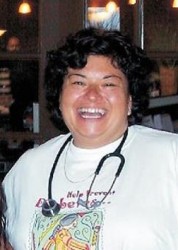Article Origin
Volume
Issue
Year
According to the Canadian Diabetes Association, Type 2 Diabetes, the kind that usually develops during adulthood, is reaching epidemic proportions in this country. The latest statistics puts the number of people living with the disease at more than nine million, one in every four Canadians. By the year 2020, says the CDA, that number is expected to increase to one in every three people.
But, for Aboriginal people, the percentage is actually three to five times worse, rising to between 17 and 20 per cent nationally, compared to just five per cent of the non-Aboriginal population.
That staggering statistic was the reason behind the development 15 years ago of a federal health-care program known as the Aboriginal Diabetes Initiative (ADI). The start of 2015 marks the end of the ADI’s 15-year commitment in which the First Nation and Inuit Health Branch of Canada pledged a total of $523 million to “help reduce the prevalence and incidence of diabetes and its risk factors” for First Nations, Inuit and Metis individuals, families and communities across the country.
The ADI has been operating through eight regional offices, in three five-year phases, each designed to accomplish a specific goal. The main objectives included community-based health promotion, awareness and primary preventions; screening and management; enhanced community health-care training and finally, improvements in knowledge sharing on what actually is working best for “promotion of health, and prevention of diabetes and associated risk factors.”
Health Canada reports a wide range of “innovative” delivery systems, tailored to accommodate different regions and communities, all aimed at improving the overall number and management level of diabetes. Exactly how successful the program has been, however, in terms of actual percentages or best practice methods, were not readily available, neither regionally or nationally, at the time of publication, according to an ADI spokesperson.
The CDA estimates that diabetes shortens the average person’s life span by up to 15 years and causes 30 per cent of all strokes; 40 per cent of heart attacks; 50 per cent of kidney failure; 70 per cent of “non-traumatic” limb amputations, as well as substantial numbers of vision loss and blindness.
While there are no comparative statistics for Aboriginal populations per province specifically, Statistics Canada’s general population figures, from 2009, shows Newfoundland leading the country for the highest rate of diabetes, followed by Nova Scotia, Ontario and parts of Alberta.
Current public health-care dollars for treatment of diabetes, and its resulting long-term complications, is around $13.5 billion annually with a projection of $17 billion by 2024.
However, the CDA reports that national and provincial health-care programs are not alone in the struggle to cover spiraling diabetes costs. More than half of individuals living with diabetes cannot afford to manage their disease properly, including being able to pay for insulin, medical supplies and healthy foods on a regular basis.
Registered Nurse, Shelley Francis, an ADI Diabetes Community Consultant, working for the Union of New Brunswick Indians and responsible for no less than 12 First Nation communities in the province, has been on the frontlines of the battle since the ADI program started a decade and a half ago.
Francis agrees with the overall CDA assessment that one of the biggest barriers towards even minimal diabetes management is poverty, but for Aboriginal people, she says, the problem involves more than just a lack of money.
“I also think there is a connection between long-term stress and diabetes,” said Francis. “Any person living with prolonged stress and even PTSD, like many of the victims of (Indian Residential Schools) has physiological changes that predispose them to diabetes. The mental illnesses that have resulted from years of destruction of our culture has led to alcohol and drug addictions, leaving little room for self-actualization and self-care,” she said.
Francis is very hopeful that the ADI program will be renewed in 2015 and cites the importance of the next generation as the major reason to continue the effort.
“Childhood obesity, unless addressed immediately, usually leads to adult obesity and ultimately diabetes and other devastating chronic illnesses,” said Francis. “In addition, despite getting the message out there about the seriousness of diabetes, we are still seeing many people living in denial [which is] leading our people down a terrible path of self-destruction and severe loss of quality of life.”
Francis is urging the public and professionals to “lobby all levels of government to get a handle on diabetes before the next generation becomes more affected.”
The ADI says application for renewal of the program has been made but “as of this point in time” there has been no word or an expected date as to when a decision, one way or the other, will be announced.
- 1626 views

